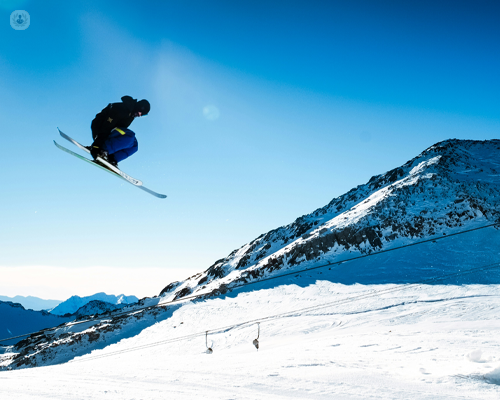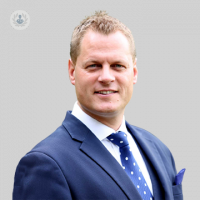Surgery for skiing and sports injuries
Escrito por:Skiing, football, rugby, and other high-impact sports often carry a risk of injuries, many of which may require surgical intervention for effective treatment. These injuries commonly affect the knees, shoulders, and other weight-bearing joints or ligaments. Surgical options not only aim to repair the damaged structures but also enable athletes to regain function and return to their sport.

What are the most common injuries in skiing and contact sports?
Skiing-related injuries often involve:
- Anterior cruciate ligament (ACL) tears: Sudden twists or falls on the slopes can result in this knee ligament being torn, leading to instability and pain.
- Shoulder injuries: Dislocations, fractures, or rotator cuff tears are common from falls or awkward landings.
- Fractures: Wrists, arms, and legs are susceptible to fractures due to high-impact collisions or falls.
In sports like football and rugby, common injuries include:
- ACL and meniscus injuries: Sudden stops, changes in direction, or tackles can damage these structures in the knee.
- Shoulder and collarbone injuries: Tackling or falling often results in dislocations or fractures.
- Achilles tendon ruptures: These occur due to sudden force on the tendon, such as during sprints or abrupt stops.
Surgical treatments for skiing and sports injuries
Surgery may be required when non-surgical options like physiotherapy or bracing fail to restore function. Treatments include:
- ACL reconstruction: A torn ACL, common in skiing, football, and rugby, is often treated with minimally invasive techniques using grafts from the patient’s hamstring or patellar tendon to replace the damaged ligament. This surgery stabilises the knee and restores mobility.
- Shoulder stabilisation surgery: Procedures like arthroscopy can repair damaged tendons or stabilise the joint in cases of dislocation or rotator cuff tears.
- Fracture fixation: Broken bones are repaired using plates, screws, or rods to ensure proper alignment and healing.
- Meniscus repair: In cases of meniscus tears, surgeons may either remove the damaged tissue or stitch it together to preserve joint function.
Recovery and rehabilitation
Post-surgery, recovery typically involves a tailored physiotherapy programme to regain strength, flexibility, and stability. For ACL reconstruction, rehabilitation may take six to nine months before returning to high-impact activities, while simpler injuries like fractures may heal in a shorter time. Shoulder stabilisation and tendon repair surgeries also require a phased approach to gradually restore movement and strength.
Why is timely treatment important?
Seeking prompt medical attention for skiing, football, rugby, or other sports injuries is essential to prevent further damage and ensure optimal recovery. With advancements in minimally invasive surgical techniques and targeted rehabilitation, most patients can return to their chosen sports with excellent outcomes.
If you're dealing with a sports-related injury, consult an orthopaedic surgeon specialising in sports medicine to explore treatment options and ensure a safe return to activity.


